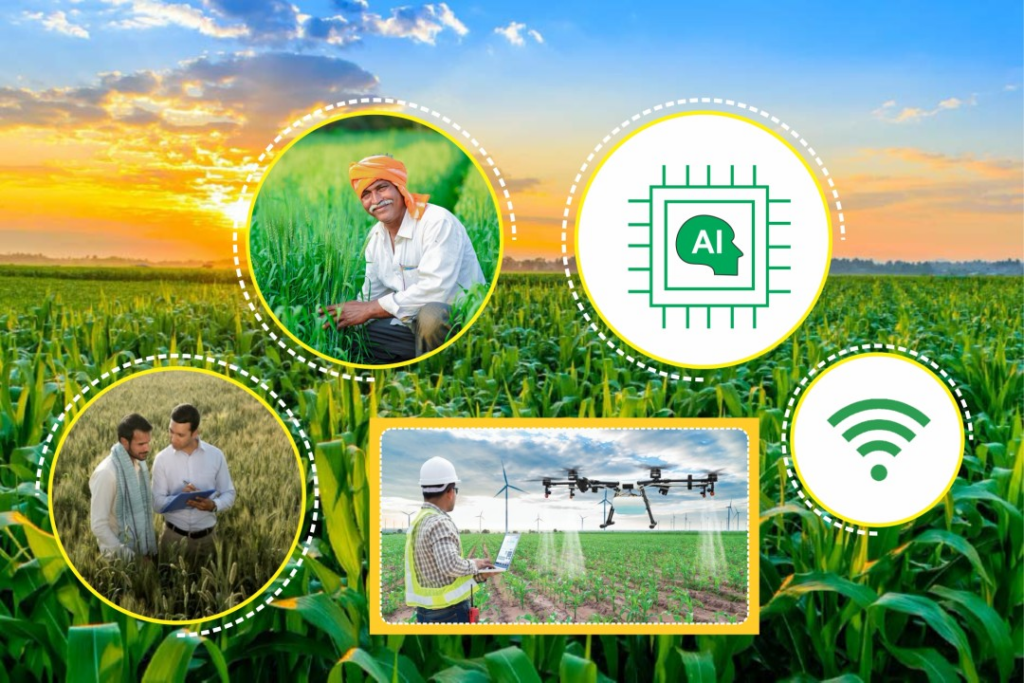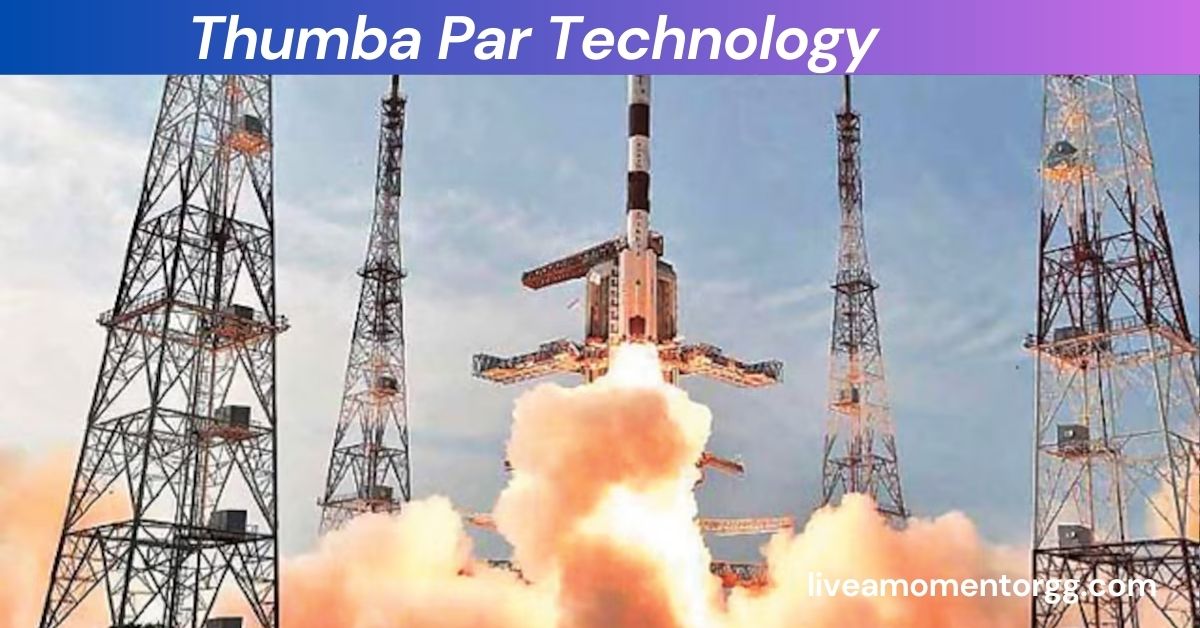Thumba Par Technology: Revolutionizing Environmental Monitoring for a Sustainable Future
In the modern world, environmental issues have become a pressing concern for all nations, industries, and individuals. Climate change, deforestation, pollution, and the depletion of natural resources are just a few of the challenges we face. However, thanks to advancements in technology, we now have the tools to monitor, analyze, and mitigate these issues more effectively than ever before. One such innovative approach is Thumba Par Technology, an integrated system designed to gather, process, and analyze environmental data.
Thumba Par Technology is playing a pivotal role in improving environmental monitoring, enabling better decision-making, and supporting sustainable practices across the globe. By leveraging cutting-edge technologies like satellite imagery, Internet of Things (IoT) devices, Artificial Intelligence (AI), and drones, this system is transforming the way we understand and interact with our environment.
This article explores Thumba Par Technology in depth, detailing its components, applications, benefits, and the significant impact it has on global environmental sustainability. We will also examine its challenges, future prospects, and the role it plays in tackling environmental crises.
What is Thumba Par Technology?
Thumba Par Technology refers to a combination of advanced technologies used for environmental monitoring and data collection. The name “Thumba Par” is derived from a region in Thumba, India, where some of the earliest deployments of this technology were carried out, particularly by the Indian Space Research Organisation (ISRO). Today, Thumba Par Technology represents a broader initiative involving the use of satellites, ground-based sensors, and data analytics tools to monitor environmental parameters in real-time.
The primary goal of Thumba Par Technology is to gather data about environmental factors such as air quality, water quality, soil health, temperature changes, and weather patterns. By collecting and analyzing this data, we can make informed decisions about climate change, pollution control, agricultural practices, natural resource management, and disaster preparedness.

Components of Thumba Par Technology
The key components of Thumba Par Technology include:
- Satellite Imagery and Remote Sensing: These are used to capture large-scale environmental data from space, providing insights into various environmental conditions, from deforestation and land use changes to atmospheric composition.
- Internet of Things (IoT) Devices: IoT devices, such as environmental sensors, transmit real-time data about local environmental conditions like air quality, temperature, humidity, soil moisture, and more.
- Artificial Intelligence (AI): AI algorithms help analyze vast amounts of data to identify patterns, predict trends, and generate actionable insights that guide environmental policies and strategies.
- Drones and UAVs: Drones are used to capture high-resolution images and videos from hard-to-reach locations, such as remote forests, coastal regions, and disaster-stricken areas, providing real-time data.
- Geospatial Data Systems: GIS (Geographic Information Systems) integrate spatial data with environmental monitoring data to create maps, models, and predictions related to environmental changes.
The Role of Thumba Par Technology in Environmental Monitoring
Environmental monitoring has become an essential tool for understanding the complex systems that govern the Earth. Thumba Par Technology is at the heart of these efforts, providing real-time data that helps governments, businesses, and environmental organizations make better decisions regarding environmental sustainability.
Also Read: Arleata Williams: A Story of Love, Legacy, and Community Impact
1. Climate Change Tracking
Climate change is one of the most pressing global challenges today, and Thumba Par Technology plays a crucial role in monitoring its impacts. Through the integration of satellite data and AI-driven analytics, this technology allows scientists to track changes in the climate over time. Key environmental indicators like temperature fluctuations, ice cap melting, carbon emissions, and greenhouse gas concentrations can all be monitored effectively using Thumba Par Technology.
For example, satellites can measure the rise in sea levels, detect shifts in weather patterns, and observe the expansion of droughts and floods. This information is critical for formulating climate adaptation and mitigation strategies, as well as guiding international negotiations on climate change agreements.
2. Pollution Monitoring and Control
Thumba Par Technology plays a vital role in pollution detection and management. Using real-time sensors and remote sensing technologies, it is possible to monitor air quality, water contamination, and soil health. These technologies provide valuable data on the concentration of pollutants, such as carbon dioxide, sulfur dioxide, nitrogen oxides, particulate matter, and volatile organic compounds.
For instance, in urban areas where air pollution is a major issue, Thumba Par Technology can provide hourly updates on air quality levels, allowing authorities to issue health advisories and take corrective actions. Similarly, by monitoring water bodies and soil conditions, pollution from industrial activities, agricultural runoff, and waste disposal can be detected early, ensuring a quicker response to prevent further damage.
3. Natural Resource Management
Sustainable management of natural resources like water, forests, and agricultural land is a critical aspect of environmental protection. Thumba Par Technology helps by providing detailed data about resource conditions. With the help of IoT sensors and satellite imagery, it’s possible to monitor water usage, forest health, and crop growth.
For instance, forest conservation can be greatly enhanced through satellite imagery and drones that identify deforestation patterns, illegal logging, and habitat destruction. Similarly, real-time water monitoring technologies help detect changes in water quality and quantity, enabling authorities to manage water resources effectively and prevent overuse or contamination.
4. Agriculture and Precision Farming
Thumba Par Technology also plays a pivotal role in promoting sustainable agriculture. By using IoT devices in combination with satellite imagery, farmers can monitor soil moisture, temperature, pH levels, and crop health, ensuring efficient irrigation and optimal growing conditions. This technology supports precision agriculture, which enables farmers to use water, fertilizers, and pesticides more efficiently, reducing waste and minimizing environmental impact.
Moreover, by collecting and analyzing data on weather patterns, pest infestations, and disease outbreaks, Thumba Par Technology helps farmers make informed decisions that improve crop yields while reducing the environmental footprint of farming practices.
5. Disaster Management and Mitigation
Thumba Par Technology is also essential for disaster preparedness and management. In regions prone to natural disasters like floods, droughts, hurricanes, and wildfires, real-time environmental data is crucial for providing early warnings and facilitating timely responses.
By analyzing weather data, soil moisture levels, and other environmental parameters, the technology can help predict disasters and enable authorities to issue warnings well in advance. For example, satellite data can be used to predict the likelihood of hurricanes or floods, allowing for evacuation plans to be put in place before the disaster strikes.
Also Read: Pablo Huston: A Life Beyond the Spotlight
Key Technologies Behind Thumba Par Technology
Thumba Par Technology is powered by a combination of several advanced technologies. Below, we explore these technologies in more detail:
1. Satellite Imagery and Remote Sensing
Satellite imagery is one of the cornerstones of Thumba Par Technology. Remote sensing technologies allow satellites to capture high-resolution images of the Earth’s surface, providing a comprehensive view of global environmental changes. This data is used to track a wide range of environmental phenomena, such as land degradation, urbanization, agricultural practices, and atmospheric composition.
Some of the most popular satellites used for remote sensing include NASA’s Landsat, MODIS (Moderate Resolution Imaging Spectroradiometer), and Copernicus Sentinel satellites. These satellites can monitor land use changes, forest cover, carbon dioxide levels, and more, providing vital information to scientists and policymakers.
2. Internet of Things (IoT) Devices
The Internet of Things (IoT) plays a crucial role in real-time environmental monitoring. IoT-enabled environmental sensors collect data on a variety of parameters, including air quality, water quality, temperature, humidity, and soil health. These devices are often placed in strategic locations, such as forests, rivers, and agricultural fields, where they continuously transmit data to cloud-based platforms for analysis.
These sensors are invaluable in precision agriculture and water resource management, as they provide constant monitoring and help optimize the use of resources.
3. Artificial Intelligence (AI)
Artificial Intelligence is the engine behind many of the data-processing capabilities of Thumba Par Technology. The vast amounts of environmental data generated through satellites, IoT devices, and sensors require sophisticated algorithms to interpret and extract useful insights.
Machine learning models are employed to detect patterns in environmental data, predict trends, and identify potential risks. AI can also be used to create predictive models for climate change, deforestation, and disaster events, enhancing decision-making and helping to prevent adverse impacts before they occur.
4. Drones and Unmanned Aerial Vehicles (UAVs)
Drones equipped with high-definition cameras and environmental sensors are another important component of Thumba Par Technology. Drones provide a cost-effective and flexible way to capture detailed images and data from areas that are difficult to access, such as remote forests or disaster zones.
These UAVs are used for wildlife monitoring, disaster relief, and agricultural assessments, offering high-quality aerial imagery and real-time data that would otherwise be challenging to collect.
5. Geospatial Data Systems (GIS)
Geospatial data systems, like Geographic Information Systems (GIS), are used to analyze and visualize environmental data. GIS integrates spatial data, satellite images, and IoT sensor data to create detailed maps that show how environmental conditions are changing over time.
For instance, GIS can be used to map the spread of deforestation in a region, track the flow of pollutants in water bodies, or monitor temperature changes across different geographical areas. This system enables better decision-making, as it provides clear visualizations of environmental data that can inform policy and planning efforts.
Also Read: FintechAsia Error Codes: A Comprehensive Guide
Applications of Thumba Par Technology in Various Sectors
Thumba Par Technology has a wide array of applications across different sectors, each contributing to better environmental management and sustainability. Let’s explore some of the key sectors:
1. Climate Science
Scientists rely heavily on Thumba Par Technology to track climate change and predict future climate scenarios. By analyzing environmental data, researchers can identify long-term trends in global warming, sea level rise, and extreme weather events. This information is crucial for developing climate change models and informing global climate policies.
2. Agriculture
Thumba Par Technology supports precision farming, helping farmers optimize crop production and reduce environmental impacts. By monitoring soil health, moisture levels, and weather conditions, the technology helps farmers reduce water consumption, fertilizer use, and pesticide application, leading to more sustainable farming practices.
3. Wildlife Conservation
Conservationists use Thumba Par Technology to track wildlife populations, monitor habitats, and assess ecosystem health. By gathering data on species movement, vegetation growth, and water availability, the technology helps identify areas at risk of habitat destruction and allows for proactive conservation measures.
4. Urban Planning
Urban planners use Thumba Par Technology to build more sustainable cities. The technology helps monitor air quality, energy consumption, waste management, and transportation patterns, which enables city officials to make decisions that improve public health, reduce pollution, and optimize resource usage.
Challenges Facing Thumba Par Technology
Despite its immense potential, Thumba Par Technology faces several challenges:
- Data Privacy and Security: The vast amount of data collected through IoT devices and satellites can be vulnerable to breaches. Ensuring that this data is secure and used ethically is crucial.
- High Costs: Developing and deploying advanced environmental monitoring systems can be expensive, especially in developing countries.
- Data Overload: With the massive amounts of data generated, analyzing and interpreting this data effectively can be overwhelming.
- Access to Technology: In some remote regions, access to the latest technology may be limited, hindering the effectiveness of Thumba Par Technology.
Also Rrad: fintechzoom .com: Your Gateway to Financial Technology Insights
Conclusion
Thumba Par Technology is revolutionizing how we monitor and manage our environment. By leveraging cutting-edge tools like satellite imagery, IoT devices, AI, and drones, this technology is enhancing our ability to track climate change, pollution, resource usage, and much more. It provides real-time data, predictive insights, and a better understanding of the natural world, empowering governments, businesses, and individuals to make informed decisions that promote sustainability.
While challenges remain, the future of Thumba Par Technology is promising, with continued advancements in data processing, sensor technology, and AI-driven analytics. As this technology becomes more accessible and refined, its role in environmental monitoring will only grow, paving the way for a more sustainable future for generations to come.
FAQs
What is Thumba Par Technology?
Thumba Par Technology is an integrated system for environmental monitoring and data collection, utilizing satellites, IoT devices, AI, and drones to gather and analyze environmental data.
How does Thumba Par Technology help in climate change?
It tracks climate patterns, such as temperature fluctuations and carbon emissions, helping scientists predict and mitigate the effects of climate change.
Can Thumba Par Technology monitor pollution?
Yes, it can monitor air, water, and soil pollution in real time, helping authorities take action to reduce harmful pollutants.
How is Thumba Par Technology used in agriculture?
It enables precision farming by providing data on soil conditions, moisture levels, and weather patterns, allowing farmers to optimize resource use.
What are the benefits of Thumba Par Technology?
The technology provides real-time environmental data, helps track climate change, controls pollution, supports sustainable agriculture, and improves disaster preparedness.






